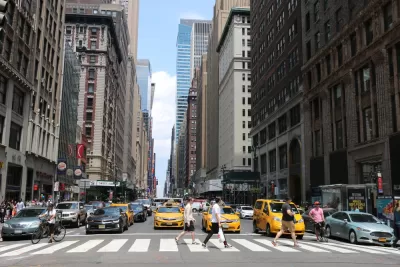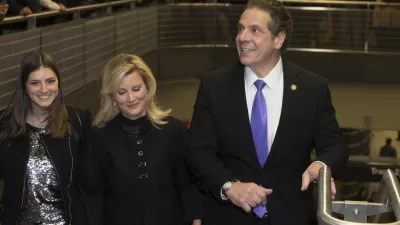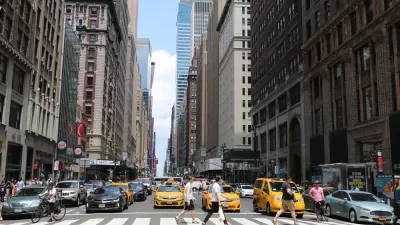Thanks to the governor's support, there is reason for optimism that a plan to charge motorists entering Manhattan below 60th St. and toll the East River bridges will have a better outcome than Mayor Michael Bloomberg's plan did in April 2008.

The road ahead for a London-style, cordon pricing plan will not be easy, warns The Times, but the support of Gov. Andrew Cuomo, "one of the few New York politicians with the influence and authority needed to persuade the Legislature to approve it," writes The Times' editorial board, is good news. His critical support may mean the it will not suffer the fate of that of former New York City Mayor Michael Bloomberg's plan, defeated by state lawmakers in Albany in April 2008.
Congestion pricing has many obvious opponents, starting with people who will have to pay new fees to drive into the heart of New York City, as well as their representatives in the Legislature.
The good news is that congestion pricing is finally back on the table. Gov. Andrew Cuomo told The Times that it was an “idea whose time has come,” and that he and his staff were working on a proposal.
But Gov. Cuomo has provided few details on his plan. The Times' editorial board recommends that the governor adopts the Move NY Fair Plan, based on the ideas of Sam Schwartz, a former New York City traffic commissioner
Move NY, which Mr. Cuomo is considering, would impose fees on cars and trucks heading south across 60th Street and vehicles that enter Manhattan from the four East River bridges that are currently free.
- It would lower tolls on outer bridges like the Robert F. Kennedy (still known as the Triborough) and the Verrazano-Narrows that serve areas with few transit options.
- It would increase fees on taxi and ride-share trips in much of Manhattan during the busiest times of day. The fees and tolls would be higher on weekdays and during rush hours, and lower at other times.
- It would raise nearly $1.5 billion a year for improving transit services in the city and the suburbs
Legislation proposed last year by Assemblyman Robert J. Rodriguez (Democrat-East Harlem) and Senator Andrew Lanza (Republican-Staten Island) would implement the Move NY Fair Plan.
However, any plan to impose cordon pricing, a form of congestion pricing applied to a region, such as downtown London or Singapore, as opposed to a toll lane, road or bridge, must first pass the New York City Council, as the Bloomberg plan did on March 31, 2008 and be signed by the mayor.
Unfortunately, New York City's Democratic mayor, Bill de Blasio (Democrat) is opposed to the Move NY Fair Plan and is on record as embracing an income-based as opposed to user fee approach to funding public transit which would do nothing to manage traffic congestion.
FULL STORY: Gov. Cuomo’s Wise Move on Congestion Pricing

Maui's Vacation Rental Debate Turns Ugly
Verbal attacks, misinformation campaigns and fistfights plague a high-stakes debate to convert thousands of vacation rentals into long-term housing.

Planetizen Federal Action Tracker
A weekly monitor of how Trump’s orders and actions are impacting planners and planning in America.

San Francisco Suspends Traffic Calming Amidst Record Deaths
Citing “a challenging fiscal landscape,” the city will cease the program on the heels of 42 traffic deaths, including 24 pedestrians.

Detroit Says Problems With Property Tax Assessments are Fixed. Advocates Disagree.
With higher-valued properties under assessed and lower-valued properties over assessed, advocates say there's still a problem with Detroit's property tax system.

Defunct Pittsburgh Power Plant to Become Residential Tower
A decommissioned steam heat plant will be redeveloped into almost 100 affordable housing units.

Trump Prompts Restructuring of Transportation Research Board in “Unprecedented Overreach”
The TRB has eliminated more than half of its committees including those focused on climate, equity, and cities.
Urban Design for Planners 1: Software Tools
This six-course series explores essential urban design concepts using open source software and equips planners with the tools they need to participate fully in the urban design process.
Planning for Universal Design
Learn the tools for implementing Universal Design in planning regulations.
Heyer Gruel & Associates PA
JM Goldson LLC
Custer County Colorado
City of Camden Redevelopment Agency
City of Astoria
Transportation Research & Education Center (TREC) at Portland State University
Jefferson Parish Government
Camden Redevelopment Agency
City of Claremont





























